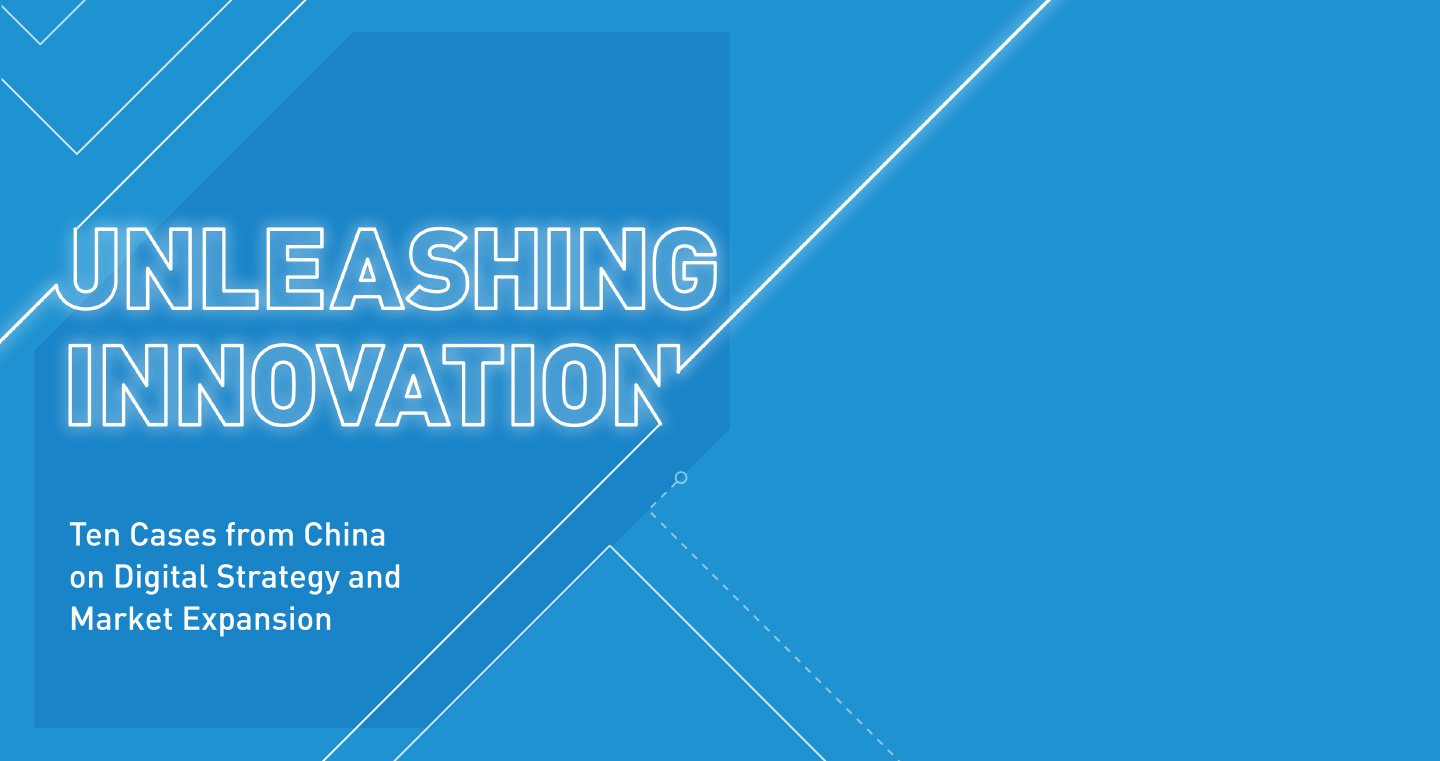On 27 January 2025, NVIDIA’s market capitalization fell by 17%, taking about $600 billion off its market value and setting a record for the highest single-day loss of market value by a single company in the history of the US stock market. The trigger for this plunge was the release of DeepSeek R1, a low-cost, open-source large language model (LLM) by Chinese company DeepSeek.
In 2023, Nvidia’s stock went on a tear, rising 239%, and it rose another 171% in 2024. At the time, the rocketing price of its stock caused some investors to become skeptical as to whether the company’s value had peaked. Satya Nadella, CEO of Microsoft, a major backer of OpenAI, made his concerns clear in a recent interview, “Current AI companies that don’t deliver real GDP growth, and that don’t have real demand to back up the products they develop, will eventually crumble and die out.”
Is the current frenzy in the AI market and soaring share prices based on the true fundamentals of companies, or are they rooted in irrational exuberance?
Whatever the answer, Nvidia’s massive one-day plunge is reminiscent of the bubble of the Internet era 25 years ago. When the Nasdaq index climbed to a then all-time high of 5,048 points in March 2000, Wall Street also did not foresee that the Internet revolution, also known as the dot-com era, would have its bubble burst, cutting its market value by $6.5 trillion within two years, with Amazon’s share price at the time plummeting by 90%.
Now, DeepSeek, as a representative of Chinese companies, has not only intensified global technological competition with its potential for technological breakthroughs and cost control, but has also triggered deeper reflection in the market on the valuation bubble in the AI industry.
Does a technological revolution inevitably come with a capital bubble? Which companies were able to leapfrog the cycle after the bubble burst and why? Despite a 25-year gap, these two waves present a profound mirror image and division in terms of market size and corporate survival logic.
With the rapid rise of Chinese companies in the global AI race and the continued expansion of global influence, this technology competition is shifting from the monopoly pattern of Silicon Valley unicorns to a diversified competitive ecology that is very different from that of the Internet era.
The dot-com era
On 9 August 1995, Netscape went public through an IPO with an EBITDA margin of -28.11% and a return on equity (ROE) of -26.14%. Throughout that day, its stock price soared from the offering price of $28 to $75, and finally closed at $58.25 per share.
As the first Internet company to bring the “unprofitable but high-growth” model into the mainstream through an IPO, this landmark event is considered to be the beginning of the Internet bubble. It disrupted the traditional earnings-focused valuation system, allowing investors to start focusing on user growth, technology leadership and market potential. This trend led to a massive influx of unprofitable start-ups into the capital markets in the late 1990s, culminating in a bubble.
From 1995 to 2000, the Nasdaq soared 573% in five years, during which time iconic companies such as Amazon, AOL, Netscape, eBay, Yahoo and Google were born. At the same time, more than 1,000 Internet companies emerged in China, including Sina, Tencent and Alibaba.
On 10 March 2000, the Nasdaq reached its then all-time high of 5,048.62 points, but fell to 1,114.11 points by 9 October 2002, a 78% drop from its peak to its trough. Nearly 5,000 Internet companies in the United States went out of business during the more than two years of sustained decline.
The three giants that fell in the bubble
Yahoo’s rise and fall reflects the typical trajectory of the first generation of Internet enterprises. As the leading portal at the time, Yahoo innovated the advertising business model by pioneering the first cascading directory navigation system—the first to transplant the traditional media advertising model to the Internet—and its advertising revenue accounted for 90% of its revenue in 1999.
However, the company failed to continuously update its business model, had a long-term fixation on a single advertising revenue structure, failed to effectively expand new business sectors (such as e-commerce and social), and due to a lack of investment in the development of key technologies lost to Google in search technology. Strategic conservatism made it unsuccessful in transforming itself in the Web 2.0 era (user-generated content) and Yahoo missed major opportunities such as the acquisition of Google and Facebook. These factors made it difficult for Yahoo to remain competitive after the Internet bubble burst. From a peak market capitalization of $125 billion in 2000, it plummeted to around $10 billion in two years, and was eventually acquired by Verizon in 2016 for $4.8bn in a deal that became its landmark fall from grace.
AOL was the first company to launch a $19.95 monthly web service in 1996, ushering in the era of the “always-on” web. The company’s “Free Trial CD ” marketing strategy implemented in 1993—mailing hundreds of millions of installation CDs to potential users—helped its user base surge from 200,000 in 1993 to a total of 34 million registered users in 2000.
However, the company’s stubborn continuation of the dial-up subscription model and neglect of broadband penetration gains in later years eventually led to a massive loss of subscribers. The merger with Time Warner is considered one of the largest failed mergers in history: AOL was valued at about $182 billion when it announced its merger with Time Warner in 2000. However, after the merger, the synergies failed to materialize due to increased cultural clashes overlaid on the neglect of product and technology transformation (especially in the broadband area), management chaos, and failure to integrate resources.
These problems led to a loss of core talent, a decline in advertising revenue, and financial pressures following the bursting of the Internet bubble, which saw its market capitalization shrink dramatically. Eventually, in 2015, AOL was acquired by Verizon for about $4.4 billion.
Netscape launched its first commercial browser, Navigator, in 1994, which at one point held 80% market share and the company’s market capitalization soared to $2.9 billion on its first day of trading in 1995. However, after Netscape was acquired by AOL in 1998, the company’s technological development came to a standstill as its core team left one after another due to internal management problems and cultural conflicts. Although the open source strategy gave birth to the Mozilla project, the company failed to respond to the competition in the market in time. By bundling Internet Explorer into its operating system and adopting a free strategy, Microsoft quickly captured market share, making Netscape’s business model difficult to support long-term development. Although Netscape no longer exists as a company, it drove the early development of the Internet and laid an important foundation for modern web technology.
Enterprises in the post-bubble era
During the Internet bubble period (1995-2003), although these three firms went through a cycle of rapid rise and fall, each falling into decline for different reasons, in general, it was the capital market’s over-optimism towards emerging technologies and the failure of traditional valuation models that were key factors in how things played out.
A lack of profitability made it difficult to effectively evaluate Internet companies based on traditional financial indicators (e.g. cash flow and price-earnings ratio), and led to a reliance on the “eyeball economy” and user growth. Overlaying weak company culture management, capital market mania and Fear of Missing Out (FOMO) mentality, venture capital and secondary markets are caught up in seemingly irrational expansion. It is difficult for companies to survive the market bubble adjustment phase if they are lagging behind in technology and lack a sustainable business profit model.
There are some businesses that have been among the few examples that have survived and thrived, such as Amazon. In addition, some emerging companies at the time, such as Google, Facebook, Alibaba and Tencent, not only escaped the bubble, but also took advantage of the reshuffling period brought about by industry adjustments to achieve success.
Amazon’s founder Jeff Bezos has always emphasized long-term innovation over short-term profits by diversifying its business layout and investing money in logistics network construction and technology development.
In 2006, Amazon launched its AWS cloud computing service, opening up new growth areas and gradually becoming a global leader in cloud services. During the bursting of the bubble, Amazon built up its capital reserves through multiple financings to ensure that it had sufficient cash flow to sustain its operations, which provided critical support to the company through the industry downturn.
Google didn’t go public until 2004 and thus managed to avoid the speculative frenzy of 1999. During this time, the company grew steadily using venture capital, not blindly pursuing short-term expansion goals, but focusing on breakthrough search technologies.
After 2000, using the PageRank algorithm, Google replaced Yahoo at the top of the search field and established a monopoly. At the same time, the company launched AdWords (2000) and AdSense (2003), both advertising model innovations which brought the company a stable and considerable source of revenue. The strategy of developing cloud computing and AI at a later stage has resulted in a complete value chain at Google, from traffic acquisition to technology empowerment.
AI era
Core elements of enterprises across the cycle
Looking back at the evolution of the Internet 25 years ago, from the original heyday to bubble to rebirth, it followed the Gartner curve of “technology germination;expectation inflation; bubble burst;recovery and maturity.” This historical cycle reveals the core features of the “survivors” of the technological revolution: the need for sustained technological breakthroughs and a sustainable profit model, as well as a capital chain that is resistant to capital fluctuations and supported by a mature and robust governance and decision-making system. Enterprises with these characteristics can not only push through the cycle and reach a level of longevity, but the characteristics also help enterprises in the Red Ocean of competition on the Internet to break through and win.
Valuation woes persist for 0-to-1 startups
During the Internet period, a large number of start-ups managed to go from 0 to 1 in terms of technological breakthroughs. However, the exit mechanism for companies during this period was dominated by the IPO.
In 1999, for example, US venture capital investments totaled $54 billion, 62% of which went to unprofitable companies—a typical example being Sequoia Capital, which saw outsized returns by betting on projects such as Google and PayPal and relying on IPO exits. At that time, corporate IPOs were growing rapidly, with 442 companies completing IPOs on NASDAQ in 2000 alone. However, due to the lack of stable earnings data as a valuation anchor and the difficulty in quantifying enterprise value from technological innovations, the valuation logic of these companies deviated significantly from traditional financial models (e.g., discounted cash flow method).
This contradiction makes it difficult for IPO pricing to truly reflect the core value of the company, laying the groundwork for a bubble. When the bubble burst, not only did Netscape, Yahoo and other benchmark companies fall, but also the second largest long-distance telephone company in the United States at the time WorldCom—due to blind expansion that led to the deterioration of the financial structure and bankruptcy. These cases reveal the systematic deviation of market value from the true value of firms, which is the core mechanism of bubble generation: the decoupling of capital pricing from fundamentals.
The current AI era faces a similar dilemma. While the technology revolution has spawned the same breakthrough innovations from 0 to 1, the valuation of AI companies still lacks a proven framework to refer to. Unlike the Internet era, which relied on IPO exit paths, the current stage favors private equity financing and M&A integration (e.g. Microsoft’s acquisition of Nuance, Google’s acquisition of DeepMind).
However, the essential paradox of enterprise valuation has not changed—the cleavage between the far-reaching earnings potential created by technological innovation and short-term financial performance remains the central dilemma of capital pricing. This uncertainty is both driving the AI investment boom and could create a repetition of the historic valuation bubble.
ChatGPT’s weekly active user base reached 400 million as of February 2025, up 33% from 300 million users in December last year. OpenAI has gone from a valuation of $150 billion in 2024 to a valuation of $340 billion in its latest funding round, but is on track to earn only $11 billion in revenue this year. And according to media analysts who have reviewed OpenAI’s financial documents, the company could lose $14 billion in 2025 and is not expected to be profitable until 2029, when revenues will reach $100 billion. Between 2023 and 2028, the company expects cumulative losses to total $44 billion.
OpenAI is in the strategic expansion period of exchanging losses for hegemony, and the sustainability of its profit model depends on the ability to maintain the technological generation gap and the speed of commercial closed-loop formation. If it can break through the arithmetic chains through hardware self-research and establish a profit-sharing system in vertical fields such as healthcare and education, it may be able to realize a transformation from loss to trillion-dollar market value; however, OpenAI’s valuation is still based on the prediction of future cash flow, and the risk caused by this uncertainty cannot be ignored. Once it is unable to maintain the requisite technology upgrades and commercial profit model, the capital chain breaks, and we cannot rule out that it has become a specimen of the AI bubble, nor the next Google.
DeepSeek, an industry dark horse that came out of nowhere in early 2025, has had an extremely significant impact on the market. Its disruption stems from algorithmic optimization—pushing down pre-training costs to less than 1/10th of the cost of industry models of equivalent performance, redefining AI economics. The market is sharply divided on DeepSeek’s valuation: forecasts range from $1 billion to $20 billion, with some even suggesting it’s worth at least half of OpenAI.
This wide variation confirms the general problem of ambiguity in the valuation system of innovative firms. Currently, DeepSeek’s core strength lies in the backing of its parent company, Phantom Square Quantitative (China’s head quantitative hedge fund). Phantom Square started stockpiling more than 10,000 NVIDIA GPU arithmetic clusters as early as 2021, allowing it to bypass the bottleneck of traditional companies relying on external financing and focus on long-term technological research and development.
The main risk now is not the pressure on the capital chain, but how to maintain the speed of technology iteration, build exclusivity barriers to improve developer retention, and the sustainability of the open source business model. The high level of uncertainty around these variables is becoming a key constraint in suppressing the valuation consensus.
Chinese companies as a historical mirror
Despite the capital frenzy that characterized both the dot-com era and the AI era, and the commonality of startup valuation woes, there are still differences between the two.
The way Chinese enterprises participate is triggering structural changes: in the dot-com era, Chinese enterprises had a core dependence on the US-led technology ecosystem, resulting in a lack of discourse in technical standards and market rules; while in the AI era, Chinese enterprises, represented by DeepSeek and Tongyi Qianwen, are directly challenging the traditional closed-source model through engineering innovations and breakthroughs in vertical application fields. The business model is centered on “payment for results.”
For example, ChatGPT relies on a subscription system and API fees (e.g. $20/month for premium services), while DeepSeek uses a free strategy to force competitors to lower prices or adjust their business models. This “price/performance revolution” may compress overall industry margins and trigger short-term valuation shocks.
This “cost-effective revolution” will not only impact the established order, but also give birth to a new ecosystem. The lowering of the technological threshold is attracting more participants to enter the AI vertical, promoting the expansion of the scope of application and causing the commercialization cycle to extend, so that the market adjustment may tend to ease. In the long term, the increased competition triggered by companies such as DeepSeek is essentially a dynamic game of technological democratization versus monopoly interests—injecting long-term momentum into economic development by promoting technological inclusion and productivity progress.
The inevitability of a pullback
During the dot-com bubble, tightening liquidity and negative profitability models posed major risks. The 89% plunge in the net profits of Nasdaq constituents in 2001 completely exposed the vulnerability of unprofitable companies to the retreat of capital.
The current challenges in the AI market are more complex: arithmetic bottlenecks (e.g. shortage of supply of NVIDIA’s high-end chips), lagging commercialization of applications for profitability (most AI companies have yet to find a sustainable path to cash), and geo-technological decoupling (e.g. chip regulation in the US and China). This is a significant departure from the globalized technological dividend-driven growth environment of the dot-com era. Such risks are compounded by the failure of traditional financial valuation methods for innovative AI companies, and the inevitability of a bubble fueled by capital mania remains.
The fact that 80,000 AI companies have been written off in China (37% of the stock), and that Shangtang Technology’s market value has shrunk by 80% from its peak; and that Waymo’s valuation in the US fell from Morgan Stanley’s 2018 forecast of $175 billion to the market consensus of $30 billion by 2023, are all signals that the initial development of a technological revolution is inevitably accompanied by a cycle of valuation bubble squeezes.
However, the adjustment of the AI market will not repeat the dramatic crash at the end of the dot-com bubble, and there is a double buffer mechanism behind it: a high technological threshold and a more rational capital environment (more tech giants directly involved in AI investment). Therefore, despite the inevitable short-term valuation correction pressure, the overall market adjustment will not be as drastic as in the dot-com era.
As the market becomes more rationalized, corporate earnings patterns will stabilize in the medium term—3-5 years—and positive cash flows make valuation assessments more comparable. In the field of LLMs, the effect of market leaders will become more and more significant, gradually forming an oligopoly pattern. In the medical, financial and other vertical scenarios, enterprises with core competitiveness are expected to take the lead in profitability, and the industry will show a polarization of “profitability at the head and elimination at the tail.”
In the long term—5+ years—AI technology could become the foundational framework for industries, and its super-automation potential (e.g., AGI, robotics) could unlock even more technological productivity dividends.
Bubbles are a by-product of the technological revolution, not the end of it
Historically, despite the devastating blow of the dot-com bubble, which led to the collapse of many .com companies, it also spawned a number of important forces that drove the next round of the tech revolution, such as the rise of companies like Tencent, Alibaba, Amazon and Google.
The technological precipitation of the bubble period laid the foundation for the later development of Web 2.0. The technological revolution has also prompted emerging companies to avoid the money-burning model of the bubble period, shift to a pragmatic development path and explore new business models.
Netflix, for example, transitioned from DVD rentals to streaming subscriptions and eventually morphed into a global streaming giant. Although Facebook was founded in 2004 after the bursting of the bubble, it benefited from improved post-bubble infrastructure (e.g. falling broadband costs), lessons learned by surviving firms, and an investment environment in which capital tended to be prudent, which allowed it to avoid many potential risks in its early years. As the bubble period had fostered users’ reliance on the Internet (especially habits such as social sharing), this laid the foundation for the development of real-name and social graph models.
Thus, without the baptism of fire of the dot-com bubble, it would have been difficult to create such era-defining technology companies.
Similarly, the AI boom will experience cyclical pullbacks, but it has long-term potential in the area of hyper-automation (e.g., robotics, AGI) far beyond the Internet era. The United States continues its first-mover advantage from the Internet era to build technological monopoly barriers, while the Chinese DeepSeek phenomenon essentially promotes technological affirmative action. With limited arithmetic and data resources, some developing countries prefer to tap into the Chinese-led open-source ecosystem rather than pay the high cost of US closed-source services. This trend could reshape the global AI value chain, transforming China from a technology follower to a leading co-developer.
In terms of future policy, a balance needs to be found—not only to support the leading enterprises to break through the technological boundaries, but also to cultivate a diversified application industry chain in order to build a benign industrial ecology. The essence of a technological revolution is not to avoid bubbles, but to drive long-term GDP growth and lead generational leapfrogging through sustained technological iteration capabilities and viable business models, supported by stable capital, and transforming phases of capital frenzy into new-quality productivity.
By Ouyang Hui, Dean’s Distinguished Chair Professor of Finance and Senior Associate Dean at CKGSB



















